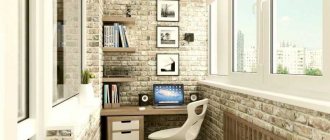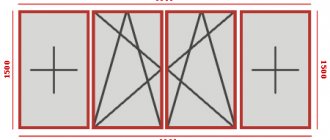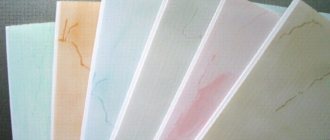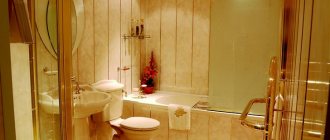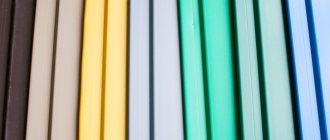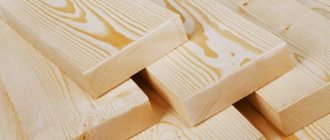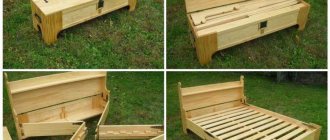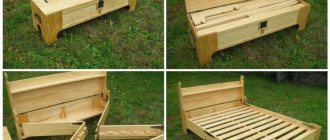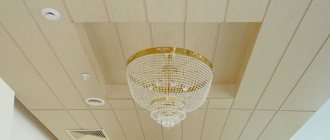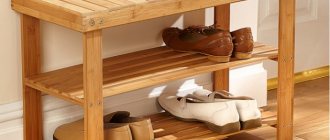Since finishing balconies is one of my areas of activity, I thought, why not use these PVC panels for interior decoration.
I sat, thought and went to the market to look, touch the panels, and talk with sellers about the interest of the population.
Wall panels are the optimal solution in cases where the main goal is a minimum of cost and effort.
They are easy to install, and the choice of colors and textures is incredibly huge, both from natural and artificial raw materials.
Today, wall panels have gained considerable popularity and success among consumers, despite the fact that they appeared on our market relatively recently.
What types of wall panels are there?
Slatted panels
These are planks with a length of 2400 - 3700 and a width of 125 - 300 mm, the thickness of which is from 8 to 12 mm.
They are most in demand in cases of covering rooms with a small area. To install them, you will need a lathing made of wood or metal.
The panels are connected due to the presence of a groove and a tenon (or there are only grooves and tabs that connect the two panels, in which case a gap is formed).
The panel is fixed to the sheathing using staples or a self-tapping screw (into the groove). Chipboard, fibreboard, PVC and MDF are used for the manufacture of slatted typesetting panels.
Tiled panels
square in shape, the size of which is usually from 30 x 30 to 98 x 98 cm, by the way, very convenient for laying out various designs, combining all kinds of shades, as well as texture.
Fastening to the wall is usually carried out using glue or clamps, and they are connected to each other only using grooves and inserts into them. Chipboard, fibreboard, PVC and MDF are also used as materials for the manufacture of tiled panels.
Sheet wall panels
They greatly facilitate the work of finishing walls due to their large sizes - from 1.22 to 2.44 m, with a thickness of 3 to 6 mm.
The surface of such panels is a multilayer structure with imitation stone, wood or tile.
Installation is done using glue, and the seams are hidden using moldings. For the manufacture of sheet wall panels, fiberboard impregnated with resins is used.
In addition to the existing three main decorative types of wall panels, there are also structural ones for the construction of internal walls and various partitions.
These include both concrete panels and sandwich panels for modular houses, which are ready-made walls with insulation, as well as moisture and vapor barrier inside. Sandwich panels are used mainly for dachas and country houses.
More on the topic: Lining the inside of the balcony with wooden clapboard
Step-by-step instructions for covering a loggia
In order to cover a balcony with plastic panels with your own hands, you need to follow simple instructions. The master does not require any special training for the job.
Preparing work surfaces
In order for the cladding to be of high quality and durable, you first need to take care of the base:
- First, we carefully inspect the walls for cracks and imperfections - we need to get rid of them favorably.
- Then you need to slightly enlarge the crack. To widen the gaps, you can use a grinder.
- Then the crack must be thoroughly cleaned of dust and debris.
- The resulting depression must be sealed with waterproof putty.
- The entire surface must be primed with a protective composition (sealing and antiseptic properties). There are a huge number of them on the construction market, but if you need an economical option, then you should use PVA putty. It has a low cost and acceptable quality.
Surface primer
Fastening the sheathing
The lathing is a special frame that is attached to the wall and on which plastic panels will subsequently be fixed. It comes in two types - wooden and metal. The latter is well suited for damp rooms, because... the profile will not absorb moisture and become damp, but the cost will be significantly higher than wood and installation will require certain professional skills.
High-quality installation of the grille, in the future, will make it possible to make partial repairs, replacing only one or several damaged plates. When completely replacing plastic with some other material, there is no need to change the sheathing - the old one perfectly withstands the same thickness of the material.
- Before installing the sheathing on the walls, you need to make markings. This will greatly simplify the installation of the guides. When drawing lines, you should use a level. Such actions will be useful later in checking the quality of installation.
- Before fastening, wooden blocks must be treated with a protective compound. To do this, you can take PVA putty or motor oil. This impregnation will protect the wood from rotting, mold and fungi.
- Now you need to fill the slats every 40-50 cm. The first one needs to be attached 5 cm from the ceiling, checking the clarity of the direction with a building level. All subsequent bars must go in strict parallel to the previous one.
- The planks are fastened using dowels or self-tapping screws with plastic tips. There is no need to rush to tighten the rail to the wall. A situation may arise when the level shows a skew and then you will have to add small plates to restore a perfectly flat surface. The dowel should extend into the wall by 3-4 cm (excluding plaster).
Important! When attaching the grille, you should take into account the places where plastic breaks most often - at the level of the knee, waist and shoulder. In these places, fixing the panels to the wood is mandatory.
Lathing for plastic panels
Insulation of the loggia
How to cover a balcony so that it becomes not only beautiful, but also warm? This worries many who want to cover the balcony themselves. To do this you need:
- Choose insulation. The simplest is inexpensive foam. It is acceptable in density and is not afraid of moisture, which makes it the most popular option. Extruded polystyrene foam will significantly exceed polystyrene foam in its characteristics, but the price of such insulation will be much more expensive. Mineral wool is an excellent option, but there is one drawback - it requires additional waterproofing. Without it, when moisture gets on the material, the insulation immediately loses its properties.
- Place insulation evenly. The polystyrene foam should be placed tightly between the wooden sheathing, and the gaps should be filled with foam.
Important! In warm climates, foil penofol can be used as insulation. It is evenly distributed and attached to the wall before work with wooden sheathing begins.
Materials from which wall panels are made
Natural wood panels
Most often made of oak, cedar, maple or alder wood. Ideal for residential premises, primarily due to their environmental friendliness.
If you install them in rooms with high humidity (bathroom or kitchen), in this case you should choose panels with a wax coating that repels water and dirt.
Chipboard panels (chipboard)
The manufacturing process is based on the method of hot pressing of shavings and sawdust, similar to wood, but less durable, because are subject to changes in temperature and humidity levels, and therefore are suitable only for finishing dry rooms.
Fiberboard panels (fibreboards)
Also made by hot pressing, but using wood and other plant fibers, they are less susceptible to moisture, environmentally friendly, however, not recommended for rooms where there is direct contact with water.
MDF panels
This is a new material based on MDF boards created by dry pressing (fine wood chips are pressed) at high temperature and pressure.
During the heating process, lignin is released from wood, which serves as a binding element.
The material can withstand sufficient loads (hanging cabinets and shelves), and is also resistant to high humidity, has heat and sound insulation, is hygienic, durable, in other words, it is of sufficient quality. Moreover, there are even fireproof MDF.
Glass panels
They are intended for creating photographic drawings that require a durable base, and therefore have a number of disadvantages.
But with careful use they can last quite a long time, especially since manufacturers are interested in using modern technologies, which has a positive effect on the strength and protection of the glass surface.
Gypsum vinyl panels
The material into which today the well-known plasterboard has grown, used to create walls, partitions and even ceilings.
The new material is the same plasterboard with the only difference that instead of cardboard it is covered with vinyl, which compares favorably with its predecessor. The panels are equipped with a finished working surface with a specific pattern, and they are also quite durable and reliable.
3D panels
A new design solution that helps you create your own individual style.
Made from fashion panels and bamboo, a material that represents a new decorative range of sculptural textured panels, painted in different tones using acrylic paints (glossy or matte finish).
The panels can create a stunning effect and turn the interior of a room into a spectacular space.
PVC panels
Plastic wall panels are also a recent material made from rigid polyvinyl chloride with a minimal amount of softener.
The panels can be safely used in almost any room, even in showers, because... they have a number of significant advantages: waterproof, fireproof, hygienic, with a long service life.
Plastic panels are the most popular variety among their “classmates”. This comes with a number of benefits. Let's take a closer look.
Lathing frame
Wooden or aluminum sheathing parts are installed simultaneously on the walls, floor and ceiling.
The recommended pitch between frame parts is 600 mm. In places that will be used more actively than others, the step should be reduced. It is advisable to strengthen the part of the floor that is adjacent to the door.
Installation sequence:
1. We mount the rail on dowels in increments of no more than 1 m.
2. Using a building level, we control the installation of elements. We place sheets of plywood or small bars under the frame parts, if necessary.
Creation of sheathing for floor covering elements.
The permissible difference in structural parts is 5 mm.
3. In the process of assembling the frame, initially you should not strongly fix the elements. This way, the sheathing will be easier to adjust.
4. After the sheathing is adjusted, the screws are fixed as tightly as possible.
Properties of plastic panels
Environmental friendliness .
It is worth noting that polyvinyl chloride is used for the production of food packaging, pipes, and medical equipment. According to the rules of the SES, finishing PVC panels are recommended for schools, sports and medical institutions.
Fire resistance. It turns out that the combustion temperature is +370 degrees, while panels made of fiberboard and chipboard light up at +250 degrees.
But that’s not all: as experiments show, PVC panels emit 2 times less smoke when burning than panels made of chipboard and fiberboard. And when tested for toxicity, it turned out that the combustion products of chipboard and fiberboard are one and a half times more toxic than their “classmate”.
Also, do not forget that finishing panels belong to the category of self-extinguishing materials.
Moisture resistance. Wall panels, thanks to their flat surface, do not retain moisture at all, and the absence of pores means that germs and mold cannot grow on the wall surface. That is why the material is often used in the bathroom and kitchen.
Easy to install. It's no secret that installing panels is not difficult; even a not very experienced craftsman can handle it. The material does not require any preparatory work or surface leveling. Moreover, the damaged part of the structure is easily replaced.
Decorative abilities. Plastic panels have a wide selection of colors and shapes. There are options with a pattern applied to the surface using thermal film. The material can decorate any surface, making it considered the most popular finishing option.
More on the topic Decorative plaster for interior wall decoration
Creating a floor
Installation of floor boards.
The insulation layer is covered with foam boards.
Coating floor boards with stain.
Size of plastic panels
The thickness can be divided into two subtypes - 5 mm and 8,9,10 mm. The second subtype (size 8-10 mm) includes moldings of the same size.
- Lining. The length is 3 m, the width is 10 cm and the rarer one is 12.5 cm (has a double profile). The most popular are “European” with a wide lock and another less popular option with a narrow lock is “polka”. Produced mainly in white, less often found in color.
- Panel. The most popular lengths of plastic panels are 260, 270 and 300 cm; the width can be 15 - 50 cm, but the most common size is 25 cm. The panel can be painted, varnished or covered with thermal film. An almost invisible seam when assembled is the main difference between the panel and the lining.
- Sheet. PVC sheets can also be called PVC plates. The sheet width can be 80-203 cm, length - from 150 to 405 cm. The most popular sheets are made of foamed PVC, while the top layer of the panel can be impact-resistant and smooth.
Criterias of choice
Selecting plastic panels is a rather complex process, during which you must be guided by certain rules and criteria. There are a few important things to consider before making your final decision.
Cost and quality
The affordable cost of the material is one of the key values when choosing. However, it must be taken into account that high-quality products cannot be sold at a reduced price. The cost of plastic products can be influenced by various factors, but the most important thing is that in order to save money, you should not purchase the cheapest products. A smart decision would be to purchase certified material from a trusted manufacturer.
Elasticity and stiffeners
The strength of plastic can be determined not only by the thickness of its walls, but also by the number of stiffeners located on the inside of the product: the more there are, the more reliable and durable the material.
You can try pressing lightly with your thumb on the front side of the panel. If a dent immediately forms, then you should refuse the purchase, since this material is unlikely to last long. High-quality plastic products must be sufficiently hard and elastic, their durability and service life depend on this.
Front side and color
When choosing, special attention is paid to the appearance of the front side. If, when examining the product from a slight angle, clearly visible stiffening ribs are visible, this indicates that the panels are most likely not of very high quality.
Good material should be evenly colored without sharp color transitions. If the plastic has a clearly visible grayish tint or blurry dark spots, this indicates that the product is made from low-quality recycled materials.
Dimensions
When choosing PVC panels, you must take into account the size of the product you are purchasing. Depending on the variety, the dimensions of plastic products in width can vary from 10 cm to 2.3 m. The length ranges from 1.5 to 6 m. To decorate a standard loggia, it is necessary to purchase models with a width of about 25 cm.
Advantages of using wall panels
Using wall panels as a finishing material, you can avoid such preparatory issues as leveling the walls, as well as removing old plaster, wallpaper and paint, i.e.
pre-finishing of walls. In addition, installation does not require special tools or equipment, nor does it require special qualifications of the technician.
All you need for this is a stapler, nails, blocks of wood and the panels themselves.
Among other things, wall panels will provide excellent sound and heat insulation in the room and masking of computer, telephone and other electrical cables.
They do not need special care either; all that is required is to wipe them once a month with any detergent or just a damp cloth.
And if necessary, damaged elements are easily replaced. But usually wall panels have a long service life, they are durable, hygienic and resistant to mechanical stress - all this will eliminate the need for annual cosmetic repairs.
Source: remontbp.com/vse-ob-otdelke/menu-steni-otdelka/pvh_paneli/
Installation using mounting strips
This method is used if the sheathing is made of plastic profiles. They have a special groove into which the mounting plate is inserted. When pressed, it is fixed inside the profile, and then the edge of the panel is inserted behind the protruding tongue. In this way, all finishing strips are installed sequentially.
The advantages of this option are high speed and low need for additional materials. No additional fastening is required, with the exception of the outer panels, which need to be screwed on with self-tapping screws for rigidity.
Finishing the balcony with plastic lining (PVC panels)
When choosing a material for finishing a particular room, it is necessary to take into account not only their aesthetic, but also their practical properties.
So, for the bathroom you should select finishing materials that are resistant to moisture, and the kitchen lining should be easy to clean.
At the same time, the living room is not so demanding, and here you can give room for imagination.
Balcony decoration has its own, special place - here it is necessary to take into account a whole range of different requirements. Thus, finishing materials must be resistant to low temperatures, which is especially important for balconies with cold glazing.
In addition, they should not deteriorate when exposed to moisture, otherwise a heavy rainfall can have a detrimental effect on the finish. In addition, if the balcony is not part of a monolithic terrace, the finishing materials should be light in weight, otherwise there is a high risk of the entire structure becoming distorted over time.
And, of course, any owner wants the decoration of the balcony to be not only practical and durable, but also beautiful.
Finding a building material that meets such a wide range of requirements, at first glance, seems impossible. However, today there is a wonderful solution - finishing the balcony with plastic lining.
This option satisfies all the specified requirements, in addition, having a number of additional advantages.
https://www.youtube.com/watch?v=4CQEkS-S0Pg
Finishing the balcony with plastic lining
Plastic panels for finishing balconies are made of polyvinyl chloride, that is, from the same material from which modern window profiles are made.
It is not difficult to guess that they have identical protective properties and are able to withstand the effects of the external environment.
Advantages of PVC lining
Finishing the balcony with plastic lining is extremely resistant to moisture.
PVC panels can be safely installed even on an open balcony - they are not afraid of either rain or snow. In addition, this material perfectly withstands the effects of both low and high temperatures: cracking or deformation during the cold period or during the summer heat is completely excluded.
PVC balcony finishing also has phenomenal durability. The fact is that polyvinyl chloride is a very inert material from a chemical point of view.
It does not decompose or oxidize under the influence of detergents, fungus cannot grow on it, and rust cannot damage it. Thanks to this, finishing the balcony with plastic lining will delight you for many years without needing replacement.
